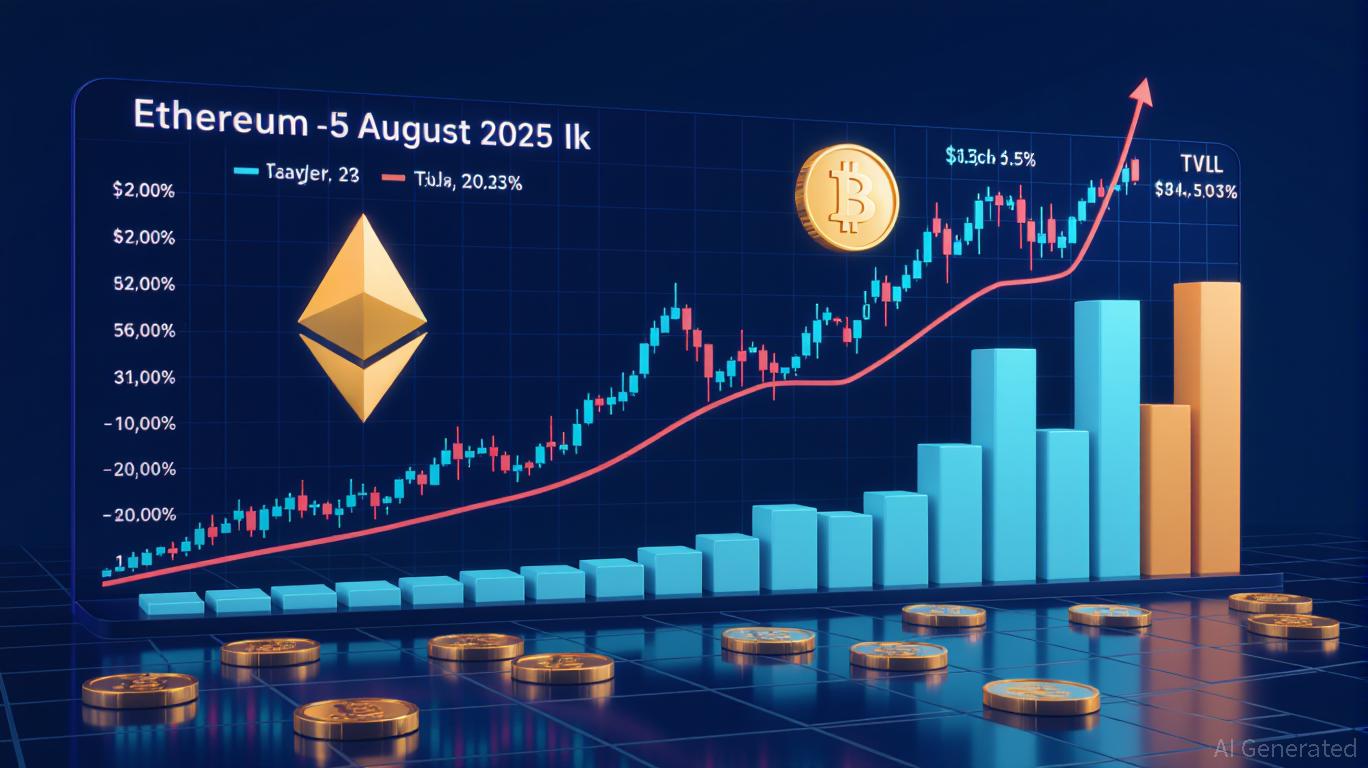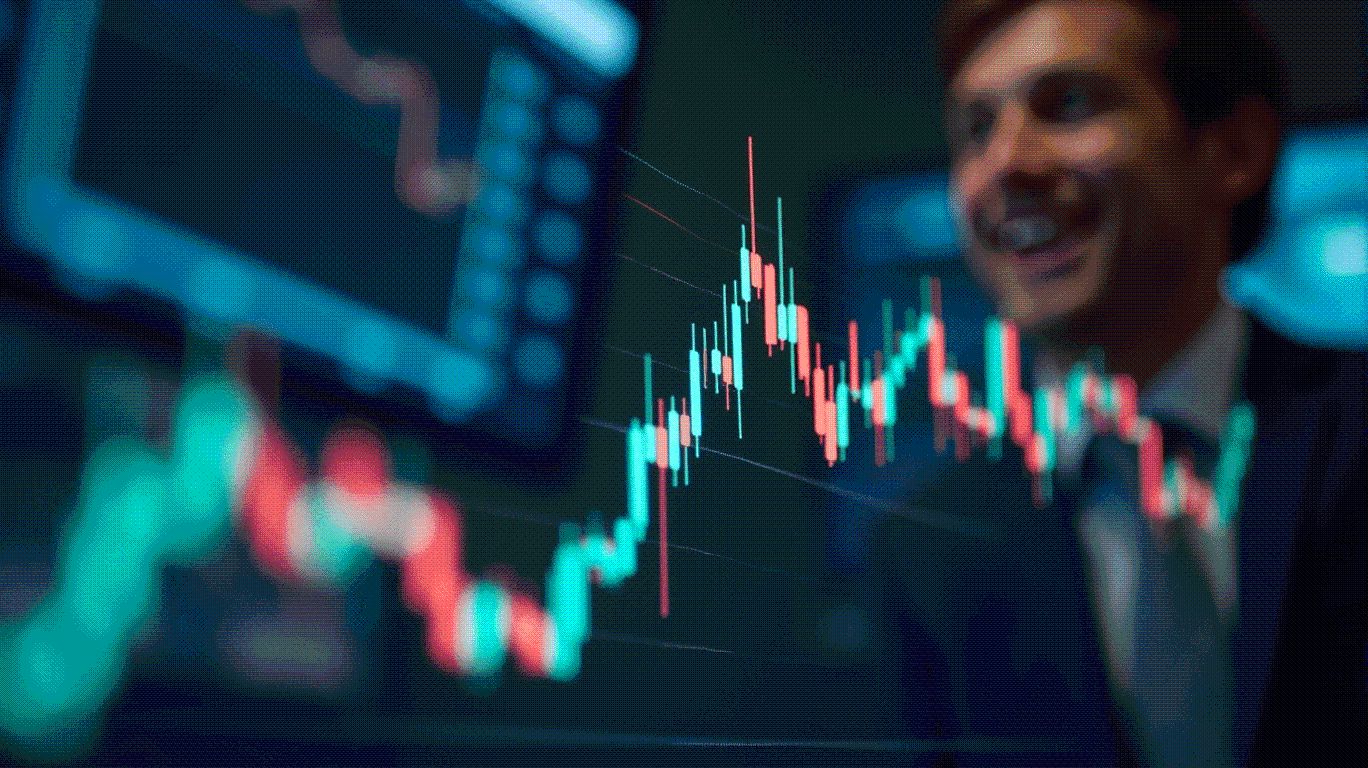Highweida Targets RWA Tokenization as Finance Crosses Digital Threshold
- Highweida, a Chinese A-share company, partners with a stablecoin RWA project to enter blockchain-based asset tokenization, aligning with global trends. - Institutional adoption of RWA tokenization accelerates in 2025, with major banks integrating tokenized assets into core operations, enhancing market legitimacy. - Regulatory frameworks like Europe's MiCA and U.S. guidance support RWA tokenization, fostering cross-border consistency and investor confidence. - Diversified tokenized assets (private equity,
Highweida, an A-share listed company in China, has recently initiated exploratory business cooperation with a stablecoin Real-World Asset (RWA) system construction project, signaling the company's strategic foray into blockchain-based asset tokenization. The collaboration aligns with broader global trends in real-world asset tokenization, which is rapidly evolving as a transformative force in finance, driven by advancements in blockchain technology and growing institutional adoption.
Tokenization of real-world assets allows for the conversion of tangible assets such as real estate, commodities, and private equity into digital tokens that can be traded on blockchain networks. This process enhances liquidity, accessibility, and transparency in asset management, particularly for previously illiquid or fragmented assets. In 2025, institutional adoption of RWA tokenization has accelerated, moving from experimental pilots to full-scale product offerings. Major financial institutions , including global banks and asset managers, are integrating tokenized assets into their core operations, thereby validating the technology and reducing perceived risks for both institutional and retail investors.
The regulatory landscape is also evolving to accommodate RWA tokenization. In Europe, the Markets in Crypto-Assets (MiCA) regulation has provided a unified framework for tokenized securities and stablecoins, fostering cross-border consistency. In the United States, guidance on tokenized securities is gradually emerging, while jurisdictions like Singapore, Hong Kong, and Japan are pioneering regulatory sandboxes that support innovation in RWA tokenization. These regulatory developments are fostering investor confidence and laying the groundwork for broader participation from conservative investors such as pension funds and sovereign wealth funds.
Highweida's engagement in this space is part of a broader trend where RWA tokenization is expanding beyond traditional assets like real estate and bonds. In 2025, tokenization is being applied to a diverse range of assets, including private equity, carbon credits, luxury goods, and infrastructure projects. This diversification is shifting RWA tokenization from a niche experiment to a multi-asset movement, offering investors access to a wider array of asset classes and liquidity opportunities. By leveraging blockchain technology, Highweida and its partners aim to build a robust system for tokenizing and managing real-world assets, potentially unlocking new value and financial innovation.
Interoperability and on-chain composability are also becoming central themes in RWA tokenization. Blockchain networks are increasingly enabling seamless interactions between tokenized assets and decentralized finance (DeFi) protocols, creating new pathways for liquidity and yield generation. Cross-chain protocols and standardized token frameworks are facilitating the movement of tokenized assets across multiple blockchain ecosystems, enhancing their utility and portability. For Highweida, this represents an opportunity to build a scalable and interoperable platform that can integrate with global financial systems, offering a bridge between traditional and digital finance.
Retail participation in RWA tokenization is also on the rise, driven by fractional ownership models that lower the barriers to entry for individual investors. Tokenized assets are now accessible through user-friendly platforms and mobile apps, allowing everyday investors to build diversified portfolios that include tokenized real estate, private equity, and carbon credit investments. This democratization of access is reshaping the investment landscape, making previously exclusive opportunities available to a broader audience. Highweida's involvement in stablecoin RWA system construction may contribute to the development of secure and compliant platforms that support this growing retail investor base.
Source: [1] Top 5 Trends in Real-World Asset Tokenization for 2025 [2] Marketing Real-World Asset Tokens: Building Trust 2025
Disclaimer: The content of this article solely reflects the author's opinion and does not represent the platform in any capacity. This article is not intended to serve as a reference for making investment decisions.
You may also like
Remittix’s RTX Token: A High-Conviction PayFi Disruption with Utility-Driven Tokenomics
- Remittix (RTX) raised $21.7M in presale, securing BitMart listing and targeting $22M for a second CEX. - RTX’s deflationary model burns 10% of fees, creating scarcity and aligning with macroeconomic trends. - RTX disrupts $100B remittance sector with 0.1% fees vs. 5–10% from traditional services, processing $1B+ annually. - Strategic airdrops and 20% referral rewards drive adoption, positioning RTX as a utility-first asset amid shifting altcoin sentiment.

Ethereum’s 6% Surge and the Implications for Altcoin Season 2025
- Ethereum's 6% price dip triggered a 433% surge in staking inflows, with 29.6% of its supply now staked. - Market share rose to 14.57% by August 2025 as Bitcoin's dominance fell to 58%, driven by $23B in Ethereum ETF inflows. - Dencun/Pectra upgrades cut gas fees by 53%, while whale investors added $456M ETH, accelerating capital rotation from Bitcoin. - Institutional adoption of RWAs and staking infrastructure, plus EIP-1559's deflationary model, position Ethereum to potentially overtake Bitcoin's market

XRP Ledger's Role in Enterprise-Grade Supply Chain Innovation in China
- XRP Ledger partners with China's Linklogis to tokenize trade assets, enabling 3–5 second settlements and slashing cross-border costs. - Platform processed RMB 20.7B in 2024, leveraging XRPL's $0.0001+ fees vs. 5–10% traditional banking charges. - RWA tokenization hit $305.8M in August 2025, with 500% transaction throughput growth, proving blockchain's enterprise scalability. - Strategic adoption by listed fintech firm validates XRPL's stability, positioning it as a regulated market infrastructure solutio

Telegram's XLM Integration: A Catalyst for Stellar's Mass Adoption and Undervalued Utility Play?
- Telegram's 2025 XLM integration taps 100M+ users, leveraging Stellar's fast, low-cost cross-border transactions to address global financial gaps. - Strategic alignment with high-inflation regions and PayPal's PYUSD integration in July 2025 boosted XLM by 5%, while Protocol 23 upgrades aim to scale DeFi and RWA adoption. - XLM's 2024 daily transactions hit 5M+, with Eastern Europe's 40% DeFi growth and Asia's 502.84% price surge highlighting regional utility potential. - Risks include weak price-user corr
